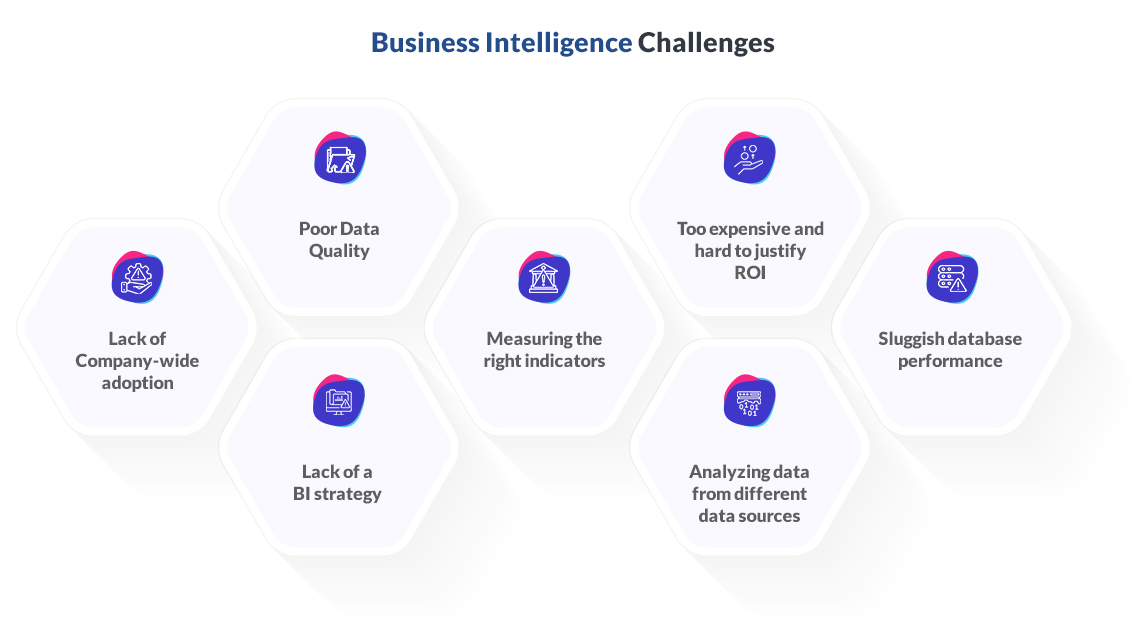Business owners who fail to take advantage of available automatic, actionable insights risk losing out. After all, locating new sources of revenue, increasing profit margins, and streamlining operational costs are crucial to today’s economic climate.
More often, CXOs and CIOs seek Business-led, Technology-enabled perspectives that come from leveraging data and turning it into meaningful insights; so that the information ecosystem’s full potential can be harnessed.
In that regard, BI systems and methodology offer significant advantages.
This blog article elaborates on the best practices of using BI, especially when integrated with Temenos T24.
Benefits with BI
A well-orchestrated BI engine has multiple advantages to offer.
From increasing the ability to address and monitor regulatory compliance, measure, and influence customer profitability, identify new revenue streams and growth pockets, elevate specific elements in offerings (3Ps), and empower leaders to make proactive decisions.
But before BI engines and integrations can bring in the rewards, data is an important consideration.
Data can pose formidable challenges.
While data is everywhere, generating value depends on the organization’s approach (and tech investments) in transforming that data into actionable insights.
Compounding that challenge often can be that KPIs aren’t aligned with the organization’s strategic, tactical, and operational goals – which means teams are blind in understanding if their performances are in the right direction. There are more practical challenges.
For instance, while the organization’s data processes (accessing, unifying, cleaning) may be working, there could be situations where a single source of truth is absent. This erodes trust and obstructs a FI’s adoption ability of AI, ML, and other deep learning models.
The need to create a robust BI framework arises from the mentioned challenges, especially when integrated with Temenos T24, so that D&A gains may be actualized.
BI framework for FIs to maximize Temenos T24
How does one construct a robust BI framework?
Firstly, building a BI framework for Temenos involves a testbed that implements analytics across key banking processes using accelerators – such as data model blueprints for design and development, that includes industry KPIs grouped by function and business drivers, and finally integrates the semantic layer that yields unified information views.
Solution architects work through the T24 implementation stages, they must stay mindful of the inevitable challenges. (see infographic below)

Being mindful of the Four Key Challenges of Integrating Banking with Temenos T24.
Finding what works – choosing the proper application.
Optimizing data assets and capitalizing on untapped business intelligence means researching multiple options that identify not only the best software supplier but also someone who offers implementation support and is a domain expert to guide you on how best to extract positive outcomes.
From the many market options available, the search for the correct application begins by knowing your own goals. The hunt for the solution can be narrowed by evaluating various lenses such as – business strategy, security and access levels needed, and the level of integration required to create value for the customer.
Furthermore, matters of ease of use and scalability must be incorporated as part of the selection process.
Elevating Data Quality and Combating Data Silos
Identifying measurable results (the purpose of a world-class Banking BI system) depends on error-free data achieved through robust pre-cleansing processes.
A reason for mediocre data quality could also be a lack of understanding amongst users or the rush to complete projects without due diligence.
Additionally, a frustrating challenge one meets in BI implementation are the legacy-siloed mindsets. Breaking down silos and harmonizing data is done by setting expectations, finetuning governance mechanisms, and obtaining leadership consensus beforehand.
This ensures that be it financial or banking performance – the BI engines feed off a single source of truth. It is only then that Temenos T24 can create a pivotal shift in supplying performance reporting data and actionable insights for the future.
Data Culture, End-user Training
In addition, to the capital investment in hardware and BI software infrastructure, specialized skills to extract maximal value are gained through employee education and change management programs.
Not limited to the leadership ranks, an authentic data culture permeates when more BI conversations happen, data-centered decision-making increases, and best practices in adapting various BI use cases are celebrated organization-wide.
Integrating Temenos to upgrade a legacy setup starts to pay dividends when the mentioned initiatives are built both grounds up and are role modeled by the leaders.
Ultimately, the users’ enhanced proficiency and a data-driven decision-making culture allow the best use of Temenos T24 automated reports.
Amping up personalization, Focussing on Business Process Re-engineering.
Temenos T24 implementation streamlines and accelerates banking processes when appropriate organizational efforts are directed toward making it customizable.
Even in the highly regulated and orderly world of finance, no two institutions are identical. Different FIs require disparate data sets for efficient operation, depending on their strategy, market seasonality, and operational lifecycle.
Furthermore, integrating Temenos with advanced BI applications necessitates regular system scans to pinpoint overhauls and optimization areas. In the longer run, this is an effective practice for incumbent banks to seize opportunities favored by market insights.
Conclusion
In sum, the truth is that data must be in the correct structure, repository, and condition to serve the organization’s BI and AI mandates.
Once that is in place, the company-wide strategy for incorporating analytics for day-to-day decision-making comes next.
With specific expertise gained through Temenos T24 applications, the established ground rules help business users, IT, technology, and the data analytics community work harmoniously. After that achieving business goals by integrating tools into daily operations and decision-making happens seamlessly.











